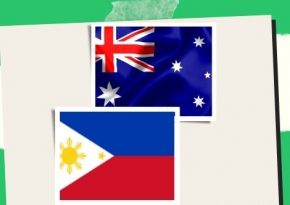
PTRI invests P25M to increase the production of PH natural dyes.
An official announced on Monday that the Philippine Textile Research Institute (PTRI) has invested PHP25 million to increase the nation’s production of natural dyes (NatDyes).
At least five towns have received assistance from the PTRI to make natural dye powders as part of the project “Colorimetric and Performance Standardization of NatDyes Produced in Various NatDyes Hubs in the Philippines.”
These settlements are situated in the provinces of Rizal, Bukidnon, Abra, Antique, and Occidental Mindoro.
While villages in Mindoro, Bukidnon, and Abra produce indigo powder for sale, the other two communities cultivate and spread Philippine indigo as a second source of income.
The PTRI has documented over 100 natural textile dye sources (botanicals), and we are adding to this list because there are many untapped natural colorants in our country, PTRI officer in charge Julius Leao told the Philippine News Agency. “Aside from Philippine indigo, there are other identified natural dye sources that we could use as a textile colorant,” he said.
He said that tropical climates are ideal for growing the indigo plant (Indigofera tinctoria).
Among our list of natural dye supplies, this plant dye is the most promising because of its color quality and community-scale manufacturing, according to Leao. In the Philippines, this is primarily commercially farmed in Abra, Occidental Mindoro, and Bukidnon.
He claimed that while indigo is a readily available commercial dye in the Philippine market, it is essential to maintain the integrity, purity, and authenticity of this natural color.
According to Leao, “compared to other natural colorants, its chromophore system is simple and pure, making it suited for constructing a template protocol or standard for natural dyes.”
According to Leao, conventional dyers use synthetic colorants throughout the dying process, which could be hazardous to the environment.
“By using natural colorants, we can participate in lowering this environmental risk,” he added, adding that the PTRI is also assisting local communities by connecting them to the expanding natural dye sector.
The executive claimed that PTRI’s project will benefit local designers, artists, and textile enthusiasts as well as natural dye hubs and facilities.
A total of 60% of the project budget was set aside for equipment purchases, mostly for the production and research of colorants, 30% went toward maintenance and other running costs, and 10% went toward people services.
Leao claimed that in addition to receiving numerous instruments for Indigo propagation and technical training, community beneficiaries also benefited.
Save/Share this story with QR CODE
Disclaimer
This article is for informational purposes only and does not constitute endorsement of any specific technologies or methodologies and financial advice or endorsement of any specific products or services.
📩 Need to get in touch?
Feel free to Email Us for comments, suggestions, reviews, or anything else.
We appreciate your reading. 😊Simple Ways To Say Thanks & Support Us:
1.) ❤️GIVE A TIP. Send a small donation thru Paypal😊❤️
Your DONATION will be used to fund and maintain NEXTGENDAY.com
Subscribers in the Philippines can make donations to mobile number 0917 906 3081, thru GCash.
3.) 🛒 BUY or SIGN UP to our AFFILIATE PARTNERS.
4.) 👍 Give this news article a THUMBS UP, and Leave a Comment (at Least Five Words).
AFFILIATE PARTNERS

World Class Nutritional Supplements - Buy Highest Quality Products, Purest Most Healthy Ingredients, Direct to your Door! Up to 90% OFF.
Join LiveGood Today - A company created to satisfy the world's most demanding leaders and entrepreneurs, with the best compensation plan today.



 Business Technology, Finance Technology & Information Technology
Business Technology, Finance Technology & Information Technology





